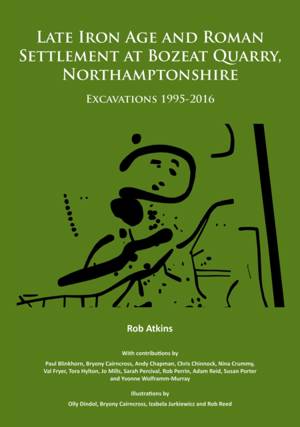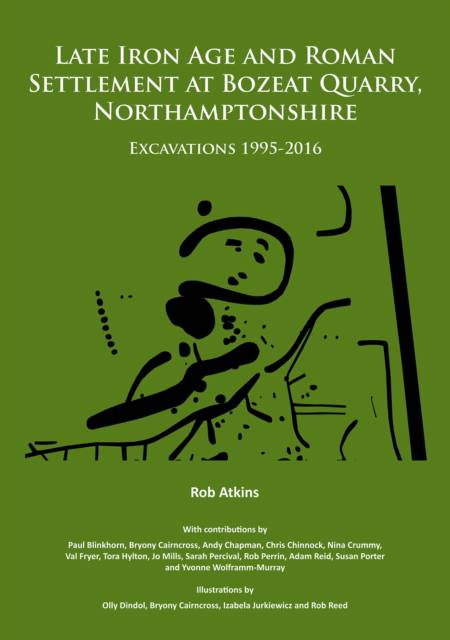
- Retrait gratuit dans votre magasin Club
- 7.000.000 titres dans notre catalogue
- Payer en toute sécurité
- Toujours un magasin près de chez vous
- Retrait gratuit dans votre magasin Club
- 7.000.0000 titres dans notre catalogue
- Payer en toute sécurité
- Toujours un magasin près de chez vous
Late Iron Age and Roman Settlement at Bozeat Quarry, Northamptonshire
Excavations 1995-2016
Rob Atkins
Livre broché | Anglais
60,95 €
+ 121 points
Description
MOLA (formerly Northamptonshire Archaeology), has undertaken intermittent archaeological work within Bozeat Quarry over a twenty-year period from 1995-2016 covering an area of 59ha. The earliest archaeological features lay in the extreme northern area where a Bronze Age to Iron Age cremation burial was possibly contemporary with an adjacent late Bronze Age/early Iron Age pit alignment. In the middle to late Iron Age a settlement was established at the southern part of the site over a c170m by 150m area. It was a well organised farmstead, mostly open in plan with two roundhouses, routeway, enclosures, boundary ditches and pits. In the early 1st century AD, cAD 30, two separate settlements lay c0.5km apart. The former southern Iron Age farmstead had perhaps shifted location c150m to the north-west and a there was new farmstead to the north. Both settlements were located on a west facing slope of a valley side and were sited on sands and gravels at between 64m and 66m aOD. The Northern Settlement was only occupied for about 150 years and was involved in pastoral farming, but local coarseware pottery production was of some importance with a group of 12 pottery kilns dated to the middle to late 1st century AD. This is seemingly the largest number of pottery kilns from a single settlement of this period yet found in the regionally important Upper Nene Valley pottery producing area. The Southern Settlement was larger and continued to the end of the Roman period. In this area there was a notable scatter of 12 Iron Age and 1st century AD Roman coins as well as 24 contemporary brooches found over an area measuring c170m by c130m. This collection of finds may suggest the presence of a shrine or temple located in the area. It is perhaps significant that in 1964 directly to the west of the excavation, a middle Roman round stone building was found, perhaps an associated shrine. Within the excavation area in the latest Iron Age to early Roman period there was a possible roundhouse, a large oval enclosure and a field system. The latter largely related to pastoral farming including areas where paddocks were linked to routeways suggesting significant separation of livestock had occurred. Four cremation burials, including one deposited in a box, and an inhumation lay in three locations. Pastoral farming was a significant activity throughout the Roman period with enclosures, paddocks and linked routeways uncovered. In the late 2nd to 4th century there were two stone buildings and a stone malt oven at the extreme western extent of the site, within 50m to the east of the probably contemporary shrine recorded in 1964. There was minor evidence of early to middle Saxon occupation within the area of the former middle to late Iron Age settlement. No structures were found, although a few pits may date to this period and mark short stay visits. A small cemetery of five individuals respected the former Roman field system and probably dated to the late 6th to 7th centuries. The burials included a decapitation and a burial with a knife and a buckle. The site was then not re-occupied and became part of the fields of Bozeat medieval and post-medieval settlements.
Spécifications
Parties prenantes
- Auteur(s) :
- Editeur:
Contenu
- Nombre de pages :
- 200
- Langue:
- Anglais
Caractéristiques
- EAN:
- 9781784918958
- Date de parution :
- 31-05-18
- Format:
- Livre broché
- Format numérique:
- Trade paperback (VS)
- Dimensions :
- 203 mm x 290 mm
- Poids :
- 738 g

Les avis
Nous publions uniquement les avis qui respectent les conditions requises. Consultez nos conditions pour les avis.






